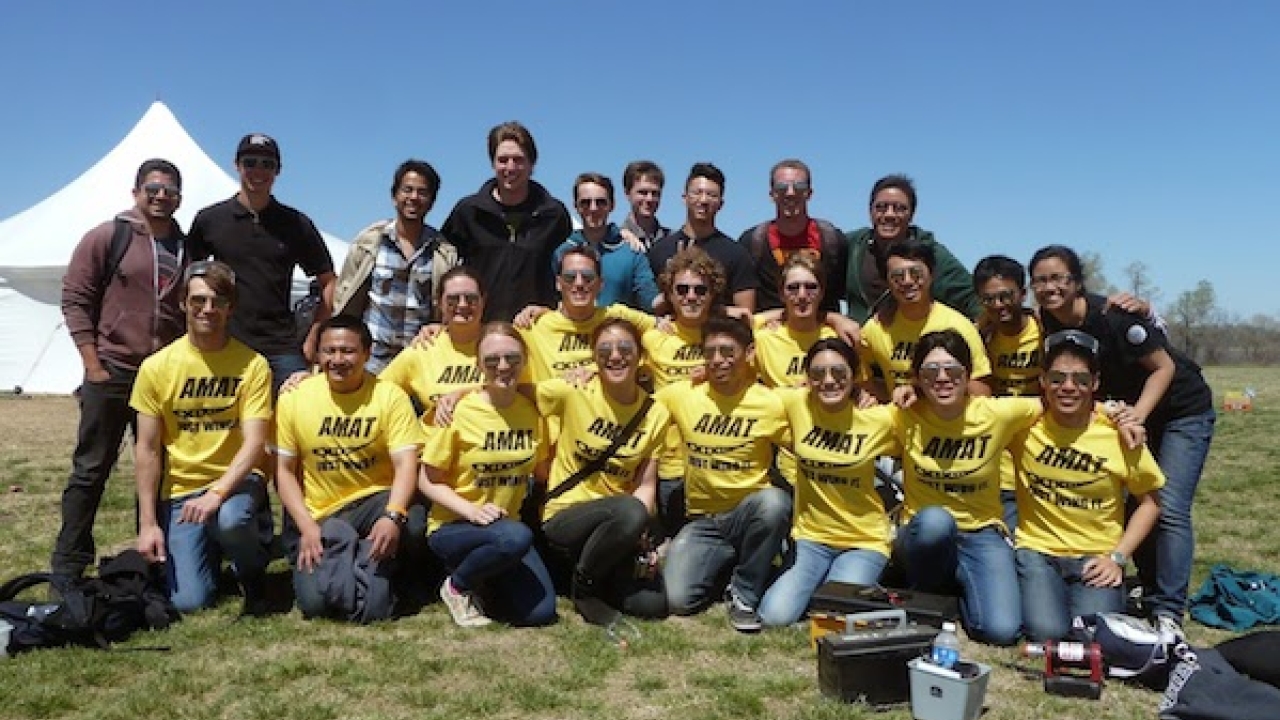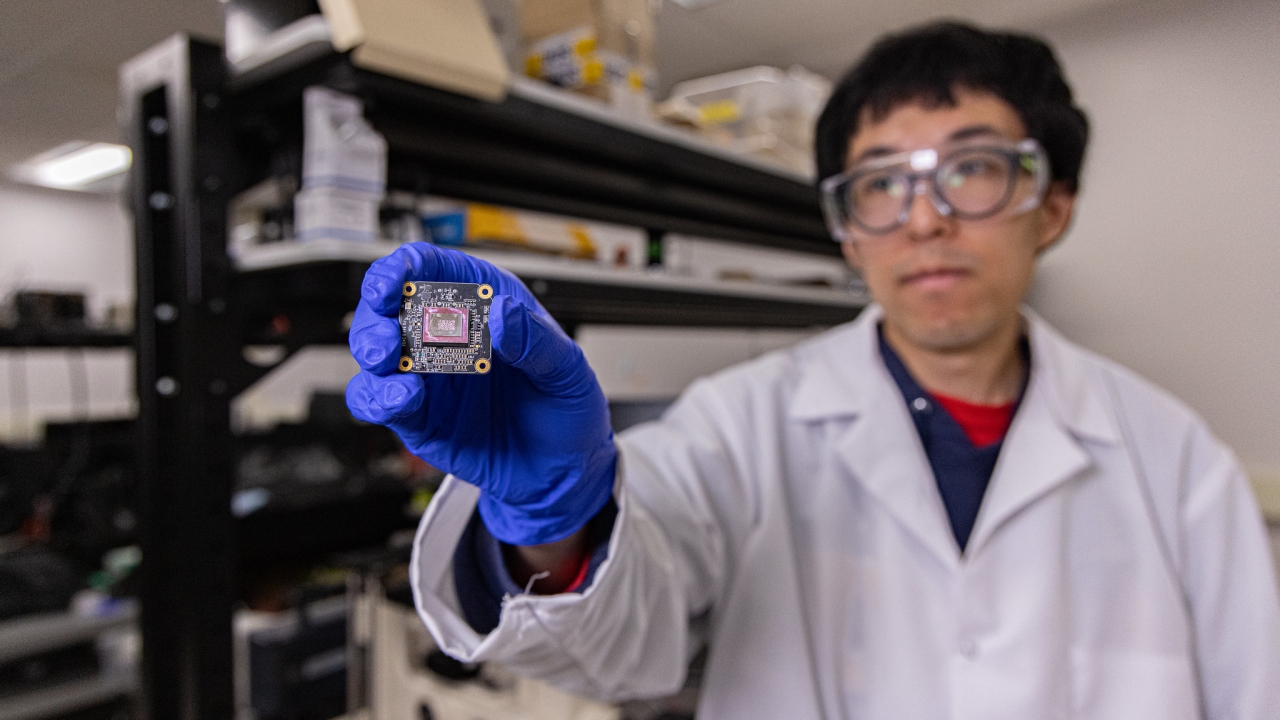
UC Davis Students Triumph at SAE Aero Design West
The UC Davis Advanced Modeling Aeronautics Team (AMAT) took home two top awards at the 2014 SAE Aero Design West competition, held March 28-30 at Thunderbird Field in Fort Worth, Texas. The UC Davis student engineers took first place in the coveted Overall Advanced Class category, narrowly edging out competing teams from the University of Toronto, and the University of Western Ontario.

The UC Davis team also won first-place honors for their Written Design Report, beating Montana State University (Bozeman) and the University of Western Ontario; and earned a fourth place in Oral Presentation.
On a lighter note, the Aggie team also triumphed in the category of Best Crash, when their plane — Aura — slipped into a right bank during the first day of flight competition, couldn’t level out, and hit the ground “rather catastrophically,” in the words of team member Jason Petersen. Undeterred, the team spent the entire night putting Aura’s scattered pieces back together, and the plane once again was air-worthy in time for the following day’s final heat.
This 2014 victory builds on AMAT’s previous successes: first place in Design, second in Presentation and second Overall at the 2013 competition; and first in Data Acquisition, third in Presentation and fourth Overall in 2012.
AMAT builds and flies large remote-controlled aircraft made primarily from composite materials such as carbon fiber, honeycomb aluminum and foam. The student engineers utilize coursework skills and teamwork to gain experience in design and manufacturing techniques, while integrating past successes with innovation, to create ever-smarter and more advanced aircraft.
The SAE Aero Design West competition is divided into three classes: micro, regular and advanced.
AMAT competes in the advanced class, which requires teams to demonstrate a systems approach to aircraft design while integrating several engineering disciplines: aerospace, mechanical, electrical and computing. Designs are limited to fixed-wing aircraft with a small engine and 8lb empty weight. This year’s challenge was to drop a three pound “humanitarian aid package” from a minimum altitude of 100 feet onto a 100ft diameter target while lifting 15lb of simulated fuel weight.
SAE International is a global association of more than 138,000 engineers and related technical experts in the aerospace, automotive and commercial-vehicle industries. SAE International’s core competencies are life-long learning and voluntary consensus standards development. SAE International’s charitable arm is the SAE Foundation, which supports many programs, including A World In Motion® and the Collegiate Design Series. The SAE Aero Design competition challenges undergraduate and graduate engineering students in a hands-on competition, exposing them to situations engineers face in real-life work environments.




